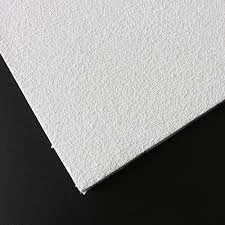Nov . 13, 2024 18:53 Back to list
plastic wall or ceiling access panel
The Importance of Plastic Wall and Ceiling Access Panels
Access panels, particularly those made from plastic, play a crucial role in modern construction and maintenance. They provide convenient access to hidden utilities and facilitate the necessary inspections or repairs without the need to dismantle large sections of walls or ceilings. This article will explore the advantages of plastic access panels, their applications, and key considerations when choosing the right panel for your needs.
What Are Plastic Access Panels?
Plastic access panels are modular components that grant entry to areas behind walls or ceilings. They are designed for situations where routine access is required for maintenance of plumbing, electrical wiring, or HVAC systems. Made from materials like high-density polyethylene (HDPE) or polyvinyl chloride (PVC), these panels are lightweight, durable, and resistant to various environmental factors, making them an excellent choice for both residential and commercial applications.
Advantages of Plastic Access Panels
1. Lightweight and Easy to Install One of the primary advantages of plastic access panels is their lightweight nature, which makes them easier to handle and install compared to traditional materials like metal or gypsum. This feature streamlines the installation process, especially in tight spaces.
2. Cost-Effective Plastic access panels tend to be less expensive than their metal counterparts. The affordability of plastic options allows builders and contractors to reduce overall project costs without compromising on utility or durability.
3. Moisture Resistance Plastic panels are inherently resistant to moisture and corrosion, making them suitable for spaces such as bathrooms, kitchens, and basements. They won’t warp, rust, or deteriorate over time due to damp conditions.
4. Customizable Many manufacturers offer customizable sizes and designs to fit specific needs, which can be particularly advantageous in unique construction setups. Additionally, plastic access panels can be easily painted to match the surrounding decor, further enhancing their aesthetic appeal.
5. Safety Features Quality plastic access panels are designed with safety features, including rounded edges and secure locking mechanisms. These features help prevent accidental openings and ensure that the panels remain securely in place.
Applications
Plastic wall and ceiling access panels are utilized across various sectors
plastic wall or ceiling access panel

- Residential Homeowners benefit from plastic access panels for accessing plumbing and electrical systems
. Installing these panels discreetly allows for minimal disruption to the home’s aesthetics.- Commercial In commercial buildings, plastic access panels provide access to essential systems like HVAC and electrical wiring. Their durability and resistance to wear make them ideal in high-traffic areas.
- Healthcare Hospitals and clinics often use plastic access panels to provide quick access to medical systems while maintaining clean environments. The ease of sterilization makes plastic a preferred material in healthcare settings.
Key Considerations
When selecting the right plastic access panel for your project, consider the following factors
- Size and Design Ensure the panel aligns with your access requirements. Measure the space accurately and consider any aesthetic elements that need to blend with existing structures.
- Material Quality Not all plastic panels are created equal. Look for high-quality materials that offer durability and resistance to environmental factors.
- Type of Access Determine whether a flush-mounted, surface-mounted, or recessed panel is more suitable for your needs. Each type has its advantages depending on the installation site.
- Manufacturer Reputation Choose panels from reputable manufacturers known for quality and reliability. Research reviews and ask for recommendations to ensure you’re selecting products that meet industry standards.
Conclusion
Plastic wall and ceiling access panels provide essential functionality in a variety of building applications. Their lightweight composition, affordability, and resistance to moisture make them an attractive choice for both new construction and renovation projects. By considering the unique needs of your space and selecting the right panels, you can ensure easy access to critical systems while maintaining the integrity and aesthetics of your environment. When installed properly, these panels serve as a practical solution for efficient maintenance, making them indispensable in modern building practices.
-
Quality Ceiling Trap Doors & Access Panels | Easy & Secure AccessNewsAug.30,2025
-
Durable Ceiling T Grid Systems | Easy InstallationNewsAug.29,2025
-
PVC Gypsum Ceiling: Durable, Laminated Tiles for Modern SpacesNewsAug.28,2025
-
Pvc Gypsum Ceiling Is DurableNewsAug.21,2025
-
Mineral Fiber Board Is DurableNewsAug.21,2025
-
Ceiling Tile Clip Reusable DesignNewsAug.21,2025







